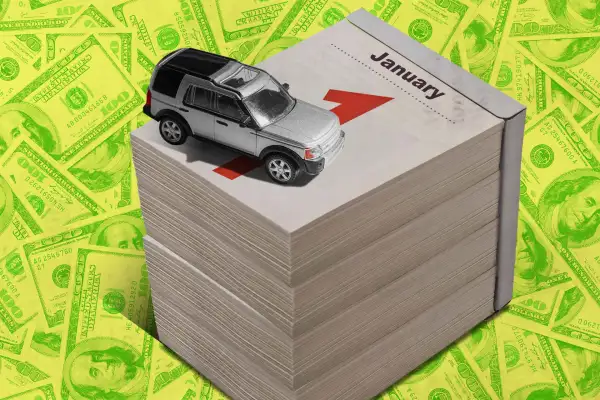Many Americans Are Now Spending Over $1,000 a Month on Their Car Payment

A monthly car payment that looks like a mortgage bill? It's more common than you might think.
With prices for both new and used cars elevated — and with interest rates on the rise — the number of car buyers dropping four figures on a monthly car payment has jumped to a record high, according to car-shopping website Edmunds.com.
It all traces back to a combination of factors that have hamstrung car manufacturers since the start of the pandemic. A shortage of computer chips, factory shutdowns, port backlogs and other bottlenecks created a domino effect of stressors on supply chains. The resulting scarcity of everything from sensors to seat foam sent prices of both new and used cars skyrocketing.
Consumers are doing what they can to keep up. In June, Edmunds found that roughly 13% of new car buyers had monthly payments of $1,000 or more. That’s nearly double the approximately 7% who paid that much in June 2021.
The average amount new car buyers borrowed in the second quarter rose to $40,602 — only the second time that figure has passed the $40,000 mark since Edmunds started tracking this in 2005.
Other data corroborates this trend. Cox Automotive, publisher of the Kelley Blue Book, found that the average cost of a new car hit a record $48,043 in June. Credit reporting agency Equifax found that as of March 2022, the average balance of new car loans and leases was $29,382, a jump of nearly 20% from a year ago.
The shortage of inventory doesn’t just mean that you’re unlikely to find the color, features or even model you want to buy — although all of those are likely possibilities, as well. Car dealer discounts and incentives have more or less vanished, with many vehicles selling for thousands of dollars above the “sticker price,” or MSRP (manufacturer’s suggested retail price).
Would-be buyers are in a tough spot as car prices continue to climb. Last fall, an expert from Edmunds said it was the "most aggravating time ever to try to buy a car." The buying environment has only gotten harder to navigate since then.
How long should a car loan be?
New car inventories are not expected to rebound to pre-pandemic levels until at least next year, and scarcity in the used-car market is expected to linger for even longer. So prices are unlikely to come down anytime soon.
This has made the typical three- or five-year car loan seem as antiquated as roll-down windows. Edmunds found that the average loan term for new cars has been creeping up. As of June, it was hovering just above 70 months. That's almost six years.
It’s understandable that more car buyers today are seeking relief from eye-popping payments by turning to 72-, 84- or even 96-month terms — but it's still a bad idea. Extending the term of your car loan if you can’t afford the payment is risky because a car is a depreciating asset. In other words, you could find yourself owing more than the vehicle is worth, which could be a problem if you need to sell it before you pay off the loan.
You'll also pay more in interest if you stretch out the term of the loan.
Tips for finding a car you can afford
If you’re in the market for a loan or lease for a car, shop around, especially with interest rates increasing. If you plan to finance a car, secure pre-approval from a lender first so you have an option other than financing offered by the dealerships you visit.
If you can afford the monthly payments, a shorter loan term (say, three years instead of five) will save you money on interest. APRs for shorter loans are often a bit lower, as well.
If you plan to trade in a car, research the value of the vehicle. It might be worth more than you imagined, which could make negotiating the price of your new car a little less painful. Selling your old vehicle privately rather than trading it in can often net you a higher amount because you're not relying on the dealership as a middleman, as well.
More on Car Insurance
Money’s Top Picks
Car Insurance Reviews Learn More |
